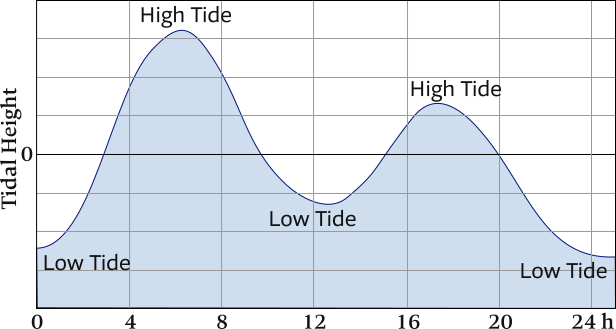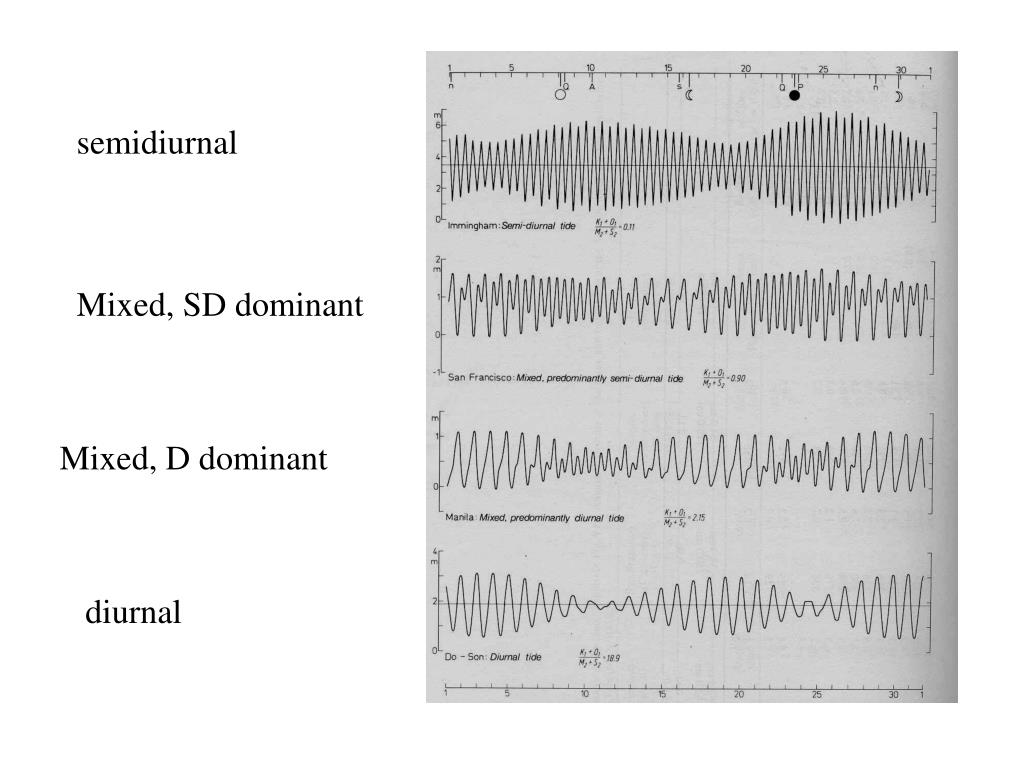
Philosophical Transactions of the Royal Society A., 259(1105), 533–581. Study of the fluctuations of the sea level along the Bulgarian coast in medium-scale frequency range (in Bulgarian). Program in atmospheric and oceanic sciences. Users guide for a three-dimensional, primitive equation, numerical ocean model. Tides in three enclosed basins: The Baltic, Black and Caspian seas. Spectrum of mesoscale sea level oscillations in the northern Black Sea: Tides, seiches, and inertial oscillations. Vladivostok: Far Eastern Scientific Center, Academy of Sciences of Soviet Union. Rabinovich (Eds.), Theoretical and experimental studies of the long-wave processes (pp.
#MIXED SEMIDIURNAL TIDE GRAPH FREE#
Calculation of seiche oscillations by finite element method in the free form basins (in Russian). Izvestia Tsentralnogo Gidromet Byuro, 4, 149–158.

Seiches in the Black and Azov seas (in Russian). Journal of Geophysical Research-Oceans, 109, C05020. Barotropic and baroclinic tidal currents on the Mackenzie shelf break in the southeastern Beaufort Sea. Russian Meteorology and Hydrology, 40(2), 100–108. Numerical modeling of anemobaric fluctuations of the Baltic Sea level. Problemi na Geographiata (Bulgarian), 2, 15–24. Diurnal amplitudes of changes of the Black Sea level near Varna and Burgas (in Bulgarian). Bulgarian Chemical Communications, 47, 343–348. Harmonic analysis of tide gauge data 2013–2014 in Bulgaria. Washington, DC: Government Printing Office.
#MIXED SEMIDIURNAL TIDE GRAPH MANUAL#
Manual of tides: appendices to reports of the U.S. Sevastopol: Marine Hydrophysical Institute, National Academy of Sciences of Ukraine. The Black Sea level: Past, present, and future. Proceedings of State Oceanographic Institute, 103, 52–73. Spectral analysis of water level oscillations in the Azov, Black, and Caspian seas within the range from one cycle over few hours until one cycle over few days (in Russian). In: The Project “Seas of the Soviet Union.” Hydrometeorology and Hydrochemistry of Seas of Soviet Union, Vol. Mitteilungen des Instituts für Meereskunde der Universität Hamburg, 22, 1–72.įomicheva, L. Hydrodynamish-numerische Ermittlung von Bewegungsvorgängen im Schwarzen Meer. Annalen der Hydrographie Maritimen Meteorologie, 60, 442–453.Įngel, M. Die Seiches des Schwarzen und Asowschen Meeres und die dortigen Hubhöhen der Gezeiten. Journal of Atmospheric and Oceanic Technology, 19(2), 183–204. Efficient inverse modeling of barotropic ocean tides. EGU General Assembly Conference Abstracts, 12, 5634.ĭefant, A. Observations of tidal energy and tidal fluxes through the Turkish Straits System. W., Jarosz, E., Beşiktepe, Ş, & Cambazoğlu, M. Estuarine, Coastal and Shelf Science, 46(5), 609–619.īook, J. Sea-level variations and their interactions between the Black Sea and the Aegean Sea. Radiational tides, initiated mainly by sea breezes, make an important contribution to the formation of tidal oscillations in the Dnieper–Bug Estuary.Īlpar, B., & Yüce, H.

The maximum amplitude of the harmonic M 2 was found at Karkinit Bay-up to 4.5 cm-while the maximum tidal range varies from 1 cm near the Crimean Peninsula to 18–19 cm in the Dnieper–Bug Estuary and Karkinit Bay.

Relatively larger M 2 amplitudes are observed on the east and west coasts of the sea (2–3 cm). Therefore, for this part of the sea the amplitudes of harmonics M 2 and K 1 are less than 0.1 cm. The results of the numerical modelling and observations reveal for the semidiurnal tides the presence of an amphidromy with clockwise rotation and another one with counterclockwise rotation for the diurnal tides, both located in the central part of the sea near the Crimean Peninsula. Detailed tidal charts for amplitudes and phase lags of the major tidal harmonics in these two seas were constructed. Based on the Princeton Ocean Model (POM), a numerical model of tides in the Black Sea and adjacent Sea of Azov was developed and found to be in good agreement with tide gauge observations. The tides in this basin are directly caused by tide-generating forces and the semidiurnal tides prevail over diurnal tides. Longterm hourly data from 28 tide gauges were used to examine the main features of tides in the Black Sea.


 0 kommentar(er)
0 kommentar(er)
